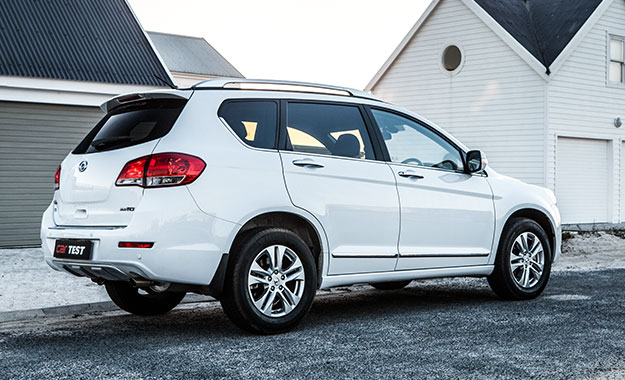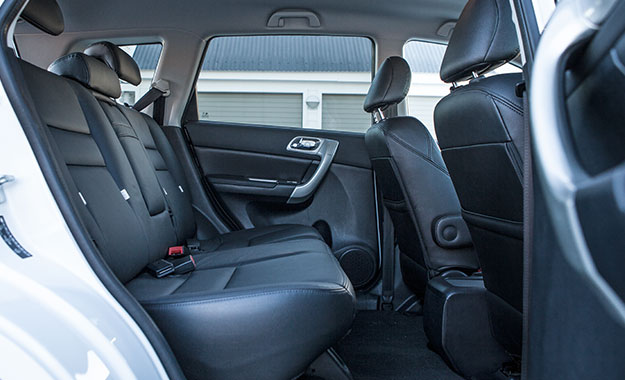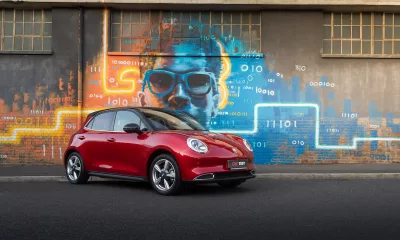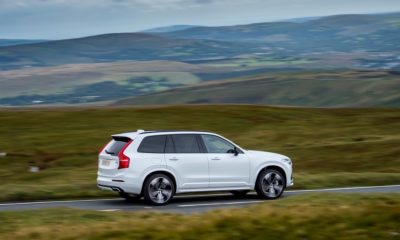IT’S the Chinese Year of the Horse and a quick glance at 2014’s proposed new-model launch schedule reveals that Great Wall Motors is not only working on improving its pedigree, but substantially increasing its representation on South African pastures.
Leading this stable that includes two new sedans (C30 and C50), the M4 crossover and new Steed 6 double cab is the H6. Representing GWMs first foray into the world of unibody construction, the H6 complements rather than replaces the frame-on-chassis H5 within the ever-popular SUV segment. And, while the H5, in both 4×2 and 4×4 guises, continues to impress as an honest, value-led rival to the likes of the popular Toyota Fortuner, GWM is relying on the H6 to gain a nose length on some of the more established rivals within the non-four-wheel-drive compact-SUV segment.
And it’s a literal nose length that the H6 gains when parked alongside many of these rivals. At 4 640 mm long (with a wheelbase that measures 2 680 mm), it’s on average 200 mm longer than the likes of the Volkswagen Tiguan and Kia Sportage. The H6 uses this size advantage to trump most of its rivals in terms of rear-passenger legroom and useable luggage space (in fact, moving the H6 closer to the MPV segment), which makes us wonder whether the inclusion of a third row of seats within the package wouldn’t have added further appeal.
A focus on styling with a clear directive to give its products global appeal (while remaining hugely popular within the Chinese market) sees the H6 boasting (arguably) some of the cleanest, most European-influenced lines of any Chinese car we’ve tested. Chrome detailing has thankfully been kept to a minimum and there’s a look of solidity to the well-proportioned body.
That same welcome sense of solidity continues within the cabin and it’s immediately clear, having spent as much time with the older H5 (we ran two versions in our long-term test fleet) as we have, that GWM has spent many hours and large sums of money on adding a touch of sophistication to the H6. Leather upholstery completes a comprehensive standard-specification list that includes climate control, auto wipers and headlamps, cruise control and an all-you-could-want infotainment system. This latter feature is, however, let down by a somewhat complicated and fiddly touchscreen interface and one of the poorest-quality speaker systems we’ve encountered. It’s a pity, as a more sophisticated system would work wonders to enhance the cosy feel of the cabin.
Even with a raised floor (for accommodating a propshaft in future all-wheel-drive models), a comfortable driving position is easily achievable, while all-round visibility is good. Both driver and front passenger gain individual armrests for added comfort.
A small screen positioned between the speedometer and rev-counter permanently displays individual tyre-pressures while offering a current or average fuel consumption, fuel range and trip information.
An upgrade to the weak speaker system would also go some way towards drowning out the clatter of the GW4D20 turbodiesel engine. An evolution of the unit featured in the H5 line-up, it’s a “characterful” engine that likes to be heard, especially at cold start-up. With no claims on being the most refined mill on the market, it nevertheless delivers an impressive 105 kW of power
to the front wheels, while 310 N.m is available between 1 800 and 2 500 r/min.
The (cost-effective) downgrading of the turbocharger from a variable- (in the H5) to a fixed-vane unit in the H6 means that most of the useable momentum is delivered from 2 000 r/min on the rev range. Once past this mark, which on our test unit was also the point at which a few “software-related” hesitations occurred, the engine performs admirably, kept on the boil via a six-speed manual transmission.
A subject of criticism in the past, this manual ‘box, operated via a tricky clutch pedal, that remains a chink in GWM’s armour. On the open road, the H6’s powertrain competes favourably with most rivals, but it’s within the confines of urban centres where a well-sorted, preferably automatic, transmission would be more welcome.
Master the intricacies of this manual transmission and the H6 delivers worthy real-world performance including (with a light foot mind) a fuel-consumption figure within reasonable sight of GWM’s claimed 6,7 litres/100 km. Most of the bad news out of the way, the H6 regains lost ground by boasting one of the more compliant and comfortable ride qualities in this segment. It’s an impressive suspension arrangement (MacPherson struts up front and multilink at the rear) that not only effortlessly brushes-off most road imperfections, but also successfully supresses the 1 664 kg body’s urge to roll while cornering or pitch under braking. The H6’s hydraulically assisted steering though somewhat vague is nevertheless well weighted.
GWM brings the H6 to market with a bouquet of safety features that includes driver and front passenger airbags (with deactivation), ABS braking (achieving an “average” rating on our test strip), tyre-pressure monitoring and Isofix child-seat anchorage points. The H6 boasts a five-star Chinese NCAP crash-test rating.
Test Summary
As we’ve come to expect from one of the more ambitious Chinese brands, GWM continues to impress with the way in which it seeks to establish itself outside the less-fickle Chinese market. There’s an honesty and charm, coinciding with steady improvements in quality and overall refinement, that accompanies each new GWM model launched.
Honesty, charm and steady improvements, however, still need to be backed by value-for-money. Unfortunately, in this aspect, importers such as GWM are feeling the pinch owing to a mounting exchange rate and other economic pressures. While the H6 is a well-specced, raised-body, soft-road SUV with class-leading interior space and versatility, pricing pressures have led it somewhat reluctantly into a paddock already occupied by more polished past and present champions. Include petrol-driven competitors within your search at the H6’s price range (while adding an optional service plan to the GWM’s base price), and it looks too light on pedigree.










